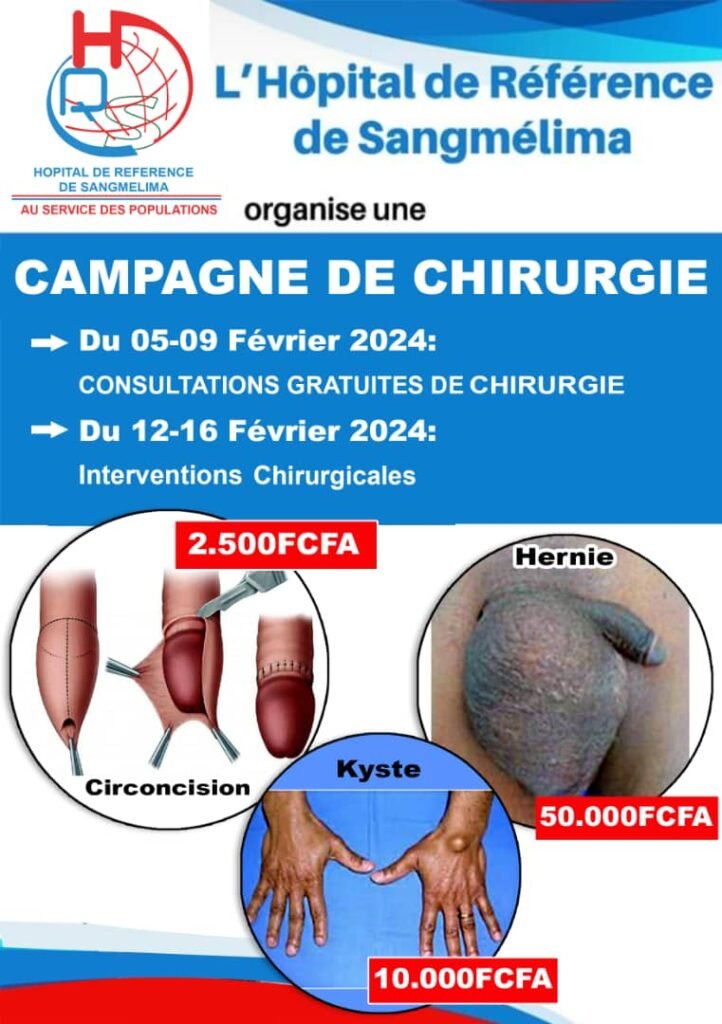Fighting tuberculosis : 25,705 new cases notified in Cameroon by 2023

All actors mobilized to end tuberculosis...
According to the Minister of Public Health, Dr. Manaouda Malachie, 1,445 (5.6%) of these are children under the age of 15, along with 181 cases of multidrug-resistant tuberculosis. The prison population is a priority target for tuberculosis control, and 700 cases of tuberculosis were notified in 2023 and monitored in the country’s various prisons and other CDTs. Finally, HIV-tuberculosis co-infection is down by around 17%, with 96% of these patients on antiretroviral (ARV) therapy.
“I’ve already noted that, while free treatment exists, it is limited exclusively to anti-tuberculosis drugs. But before being put on treatment, the patient has to pay various fees which are all obstacles to access to treatment for a certain category of people“, explains Dr. Josiane Tantchou, a health anthropologist. Her analysis contrasts with the theme of the 31st World TB Day celebrations. “Yes, we can put an end to tuberculosis! Like other countries, Cameroon will be celebrating the 31st World Tuberculosis Day on March 24, 2024.
On the eve of this celebration, the Minister of Public Health, Dr. Manaouda Malachie, made a press statement on March 20, 2024, in the conference room of the Centre de coordination des opérations d’urgences de santé publique (CCOUSP). “On this occasion, allow me to thank you warmly and, above all, to congratulate myself on your numerous presence at this press briefing. I would particularly like to express my sincere thanks to the bilateral and multilateral partners who are working tirelessly alongside us in the fight against tuberculosis. Your presence here bears witness to your commitment to the fight against tuberculosis, which remains a major public health concern in Cameroon“, said the Minister of Public Health, Dr Manaouda Malachie.
According to the World Health Organization’s 2023 report, worldwide, 7.5 million cases of tuberculosis were diagnosed in 2022. This is the highest number since WHO began monitoring tuberculosis worldwide in 1995. For several years now, the celebration of World Tuberculosis Day in Cameroon has been the culmination of a week of activities, punctuated by moments of introspection, to amplify and make more visible the work of all those involved in achieving the WHO’s goal of ending tuberculosis in Cameroon by 2035.
By 2023, the fight against tuberculosis in Cameroon will have reached a number of milestones: the incidence rate estimated by the World Health Organization (WHO) will rise from 164 new cases per 100,000 inhabitants in 2021 to 154 new cases per 100,000 inhabitants in 2022, demonstrating the hard work of our teams in the field. Mortality among tuberculosis patients will fall from 30 to 26 cases per 100,000 inhabitants between 2021 and 2022. (WHO report, 2021/2022). In terms of diagnostics, in addition to microscopy, we offer 72 GeneXpert machines and 49 TB-LAMP machines for molecular diagnostics, distributed throughout the country.
25,705 new cases of all forms of susceptible tuberculosis were reported, of which 1,445 (5.6%) were children under 15, as well as 181 cases of multidrug-resistant tuberculosis. It should be noted that in 2021 we were at 22,822 cases of all forms. The 12.5% increase in notification testifies to the added value of the “Active case-finding” approach adopted by Minsanté, involving players at all entry points under the impetus of mentors. Growing community activities contributed to 10% of this notification. The prison population is the priority target in the fight against tuberculosis, and 700 tuberculosis cases were notified in 2023 and followed up in the country’s various prisons and other related CDTs.
Finally, HIVµ-tuberculosis co-infection is down to around 17%, with 96% of these patients on antiretrovirals (ARVs). Despite numerous initiatives that have considerably reduced the impact of the disease on the population, the country is still facing a number of worrying challenges: under-reporting of all forms of tuberculosis, maintenance of laboratory diagnostic tools and the establishment of a good sampling system, ongoing advocacy with partners and other donors for the consistent mobilization of funds allocated to the fight against tuberculosis, and free sputum examination through USERFERS activities. Yes, we can put an end to tuberculosis by 2035 by developing synergies of action with all state and non-state actors, as well as with other experts, particularly in communications.
Elvis Serge NSAA














